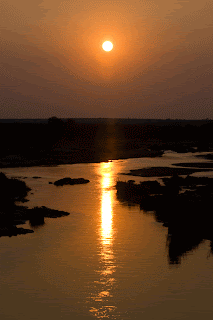 Our trip to the blue city began with Jaswant Thada, a translucent white marble memorial built for Maharaja Jaswant Singh II. From here you can view the massive structure that is Mehrangarh Fort. This fort towers on a cliff over the city and after exploring some of the exhibits we made our way to the top for the charming view of the iconic blue painted houses below.
Our trip to the blue city began with Jaswant Thada, a translucent white marble memorial built for Maharaja Jaswant Singh II. From here you can view the massive structure that is Mehrangarh Fort. This fort towers on a cliff over the city and after exploring some of the exhibits we made our way to the top for the charming view of the iconic blue painted houses below.  Supposedly, they are painted blue because it is a Muslim community, however, green is usually the chosen color of Islam.
Supposedly, they are painted blue because it is a Muslim community, however, green is usually the chosen color of Islam.Happy to be spending a couple nights in one location we arrived to the quieter “Golden city” of Jaisalmer. Not really known for the actual metal, the city gets its name instead from the yellow sand of the nearby Thar Desert. We spend the morning walking around the sandstone walled fort of Jaisalmer where many people still live inside. Walking up the path we come across the filming of a Bollywood movie as men in sparkling costumes and big fake mustaches dance down the street.
 After spending the morning dodging cows and “tour guides” we head back for our camel safari and sleep over in the desert.
After spending the morning dodging cows and “tour guides” we head back for our camel safari and sleep over in the desert.Karma tells us that someone will pick us up in a jeep and take us out to the safari location. Someone eventually shows up in a rickety little car but doesn’t acknowledge us. A few minutes later our “friendly” hotel staff just points at the car so we get in. Joking that we are being kidnapped and taken to Pakistan, we suddenly stop laughing as our driver doesn’t seem to know where to go
 and a swarm of camel drivers buzz about the car when he stops. Hoping for the best we follow his directions and go with two of the camel guides. Still a little unsure we head out into the desert but are reassured once we see the name of the camp sign.
and a swarm of camel drivers buzz about the car when he stops. Hoping for the best we follow his directions and go with two of the camel guides. Still a little unsure we head out into the desert but are reassured once we see the name of the camp sign.Arriving just before sunset we are joined with a small friendly Intrepid tour group. Glad to have some company we enjoyed a desert meal as the sun disappeared behind the sand dunes. The moon lights up the sky as we are treated to traditional song and dance. After the merriment we head to our side of the desert to s
 leep on our cots under the stars. We woke up with the sun and entertained ourselves with “Battle of the Dung” as the beetles duke it out for the prime pieces of camel poo. Stuck behind Jason’s flatulent camel we make it back safe and sound, with just sore bums from the ride.
leep on our cots under the stars. We woke up with the sun and entertained ourselves with “Battle of the Dung” as the beetles duke it out for the prime pieces of camel poo. Stuck behind Jason’s flatulent camel we make it back safe and sound, with just sore bums from the ride.The next evening Karma took us to a Hindu festival called Dussehra.
 Hundreds of people make their way to the local stadium to view the large painted bamboo statue of Ravana. In celebration of good vs. evil the army lights the firework packed statue ablaze. The show ends quickly and we make our way out with the masses with the occasional tug or bumb on your pockets.
Hundreds of people make their way to the local stadium to view the large painted bamboo statue of Ravana. In celebration of good vs. evil the army lights the firework packed statue ablaze. The show ends quickly and we make our way out with the masses with the occasional tug or bumb on your pockets.









































